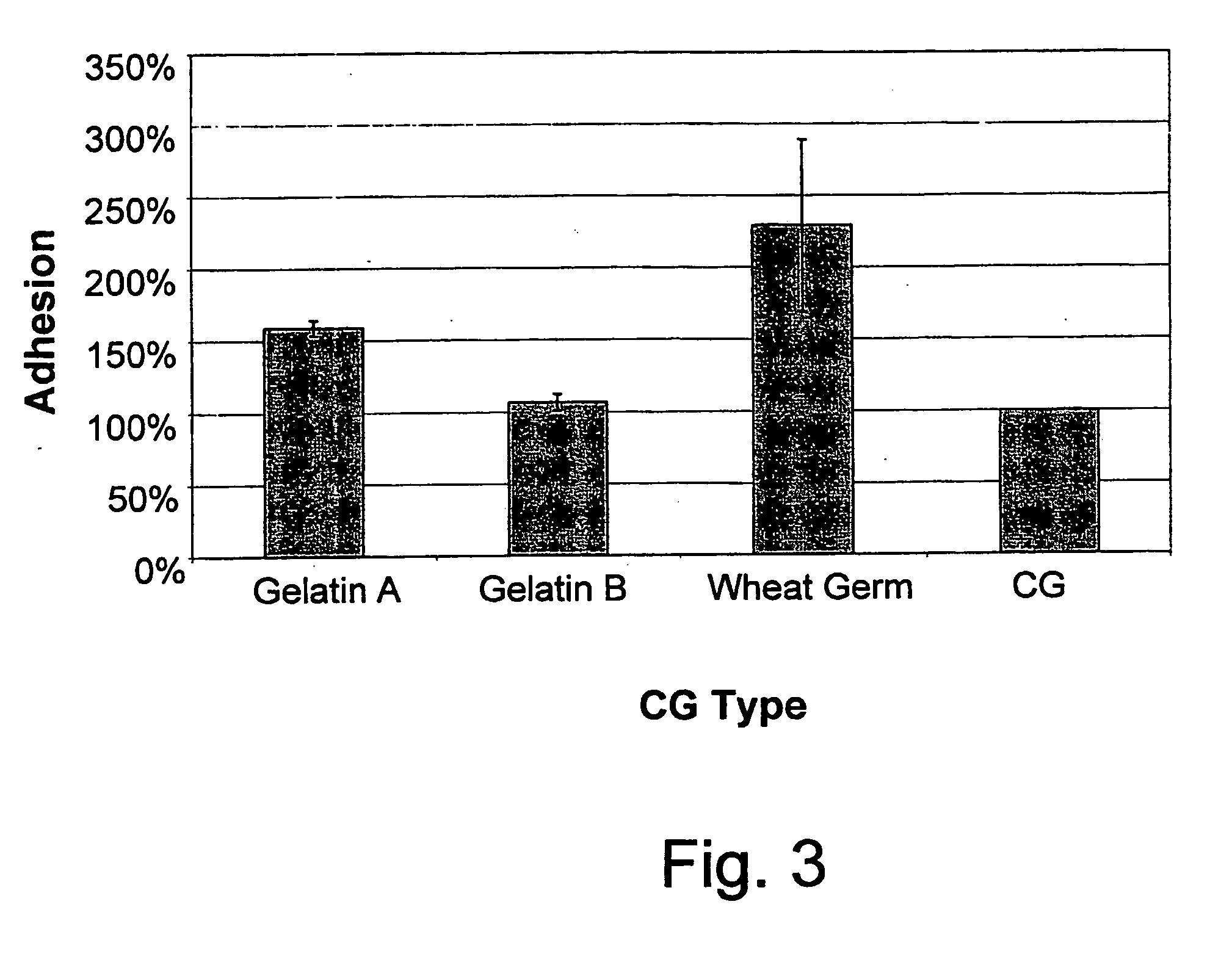Edible compositions capable of removing oral biofilm
a biofilm and edible composition technology, applied in the field of edible compositions capable of removing oral biofilm, can solve the problems of high risk of recurrence of dental disease, and the presence of microflora to become potentially pathogenic, and achieve significant adsorption of oral bacteria, reduce bacterial adhesion to oral cavity surfaces, and high adhesion properties
- Summary
- Abstract
- Description
- Claims
- Application Information
AI Technical Summary
Benefits of technology
Problems solved by technology
Method used
Image
Examples
example 1
6.25 g of chewing gum base were heated in a microwave oven up to the paste state and were mechanically mixed with 1.25 g of a powder or granules of a polysaccharide or polysaccharide derivative. The resulting matrix is composed of the gum base and the polysaccharide particles dispersed within it. Then the chewing gum / polysaccharide matrix was shaped into discs with diameter of ˜5-6 mm and thickness of ˜2 mm, which were allowed to harden upon cooling. The following polysaccharides were tested: chitosan (Amercol, Kytamer L), sodium alginate (Sigma Chemical Co.), calcium alginate (prepared as precipitate after mixing 100 ml of 1% sodium alginate and 100 ml of 2% CaCl2 solutions), sodium salt of high viscosity carboxymethylcellulose, CMC (Sigma Chemical Co.), ethylcellulose (Sigma Chemical Co.), methylcellulose (Viscotran, Aadopri-20), microcrystalline cellulose (Avicel, FMC), guar gum (Sigma Chemical Co.), xanthane (Rhodia, Type 200), locust bean gum (Sigma Chemical Co.), dextran, M.W...
example 2
6.25 g of chewing gum base were heated in a microwave oven up to the paste state and mixed with 0.625-1.25 g of inorganic substances. Then chewing gum discs with a diameter of ˜5-6 mm and thickness of ˜2 mm were formed and allowed to harden. The following inorganic substances were tested, in the form of powder: silica (Promeks Israel), hydroxyapatite (Biorad), calcium carbonate (Fluka).
The discs were then incubated with the 3H-labeled bacteria, as described above. The results shown in FIG. 2 demonstrate that gum containing silica exhibited the best adhesive properties for Strep. mutans, 175% adhesion, while hydroxyapatite and calcium carbonate gave about 140% adhesion.
example 3
6.25 g of chewing gum base were heated in a microwave oven up to the paste state and mixed with 1.25 g of protein. Then chewing gum discs with a diameter of ˜5-6 mm and thickness of ˜2 mm were formed and allowed to harden. The following proteins were tested: gelatin type A (from porcine skin), gelatin type B (from bovine skin) and lectins (from wheat germ) [all from Sigma Chemical Co.].
The discs were then incubated with the 3H-labeled bacteria, as described above. The results shown in FIG. 3 demonstrate that gum containing wheat germ (lectin) exhibited the best adhesive properties for Strep. mutans (230%), while Gelatin A gave 160%, compared to Gelatin B which was practically ineffective in adsorbing the same bacteria, compared to the chewing gum base (CG).
PUM
| Property | Measurement | Unit |
|---|---|---|
| Affinity | aaaaa | aaaaa |
| Toxicity | aaaaa | aaaaa |
Abstract
Description
Claims
Application Information
 Login to View More
Login to View More - R&D
- Intellectual Property
- Life Sciences
- Materials
- Tech Scout
- Unparalleled Data Quality
- Higher Quality Content
- 60% Fewer Hallucinations
Browse by: Latest US Patents, China's latest patents, Technical Efficacy Thesaurus, Application Domain, Technology Topic, Popular Technical Reports.
© 2025 PatSnap. All rights reserved.Legal|Privacy policy|Modern Slavery Act Transparency Statement|Sitemap|About US| Contact US: help@patsnap.com



